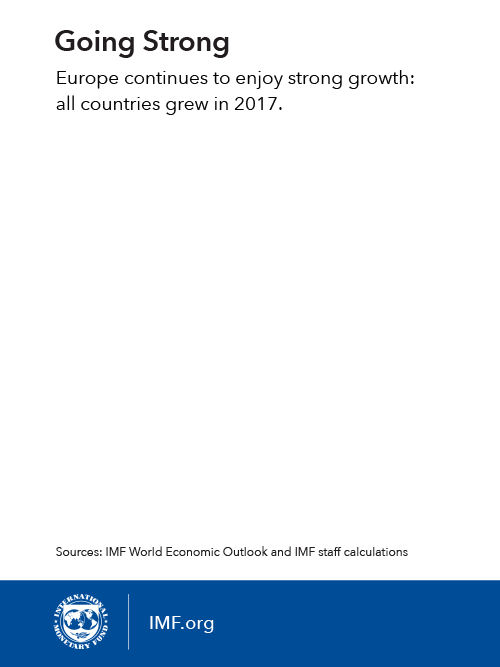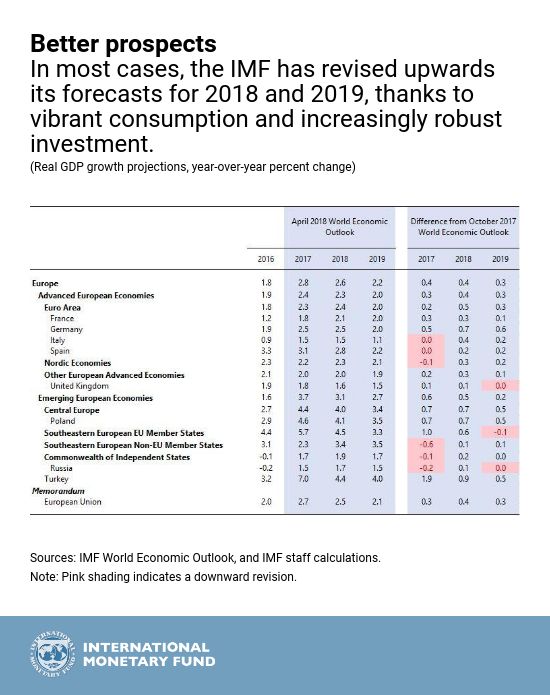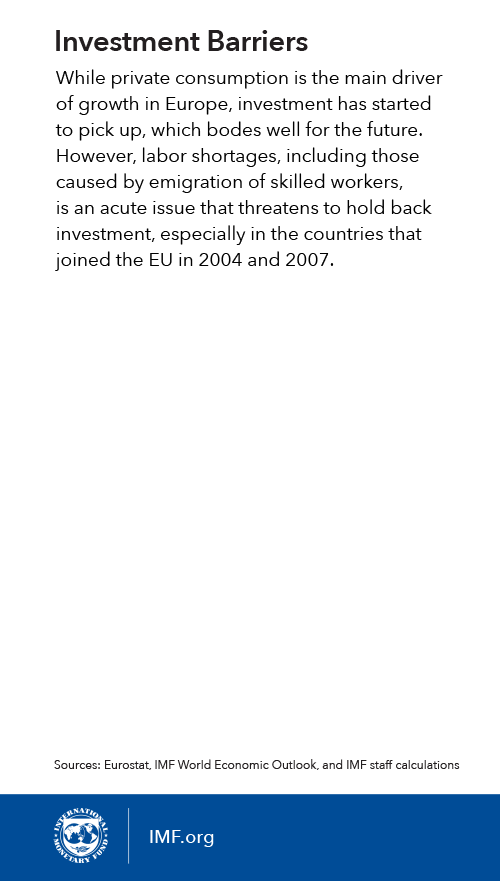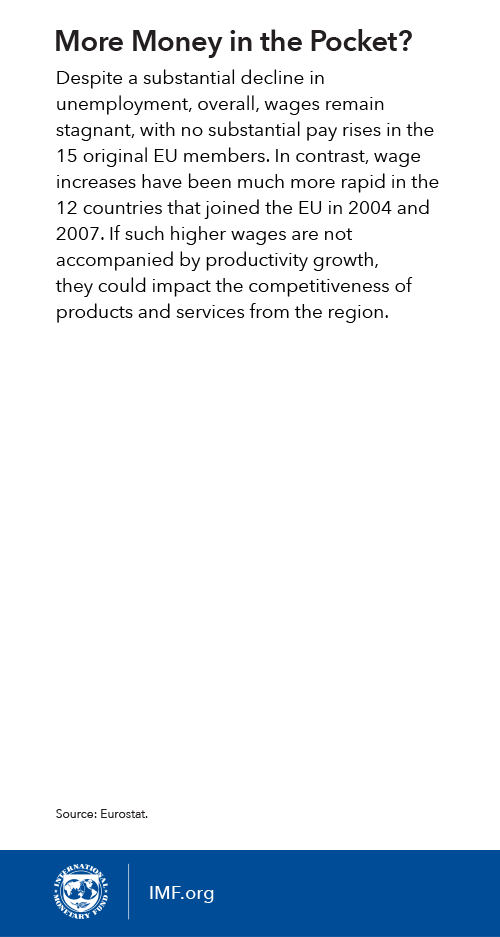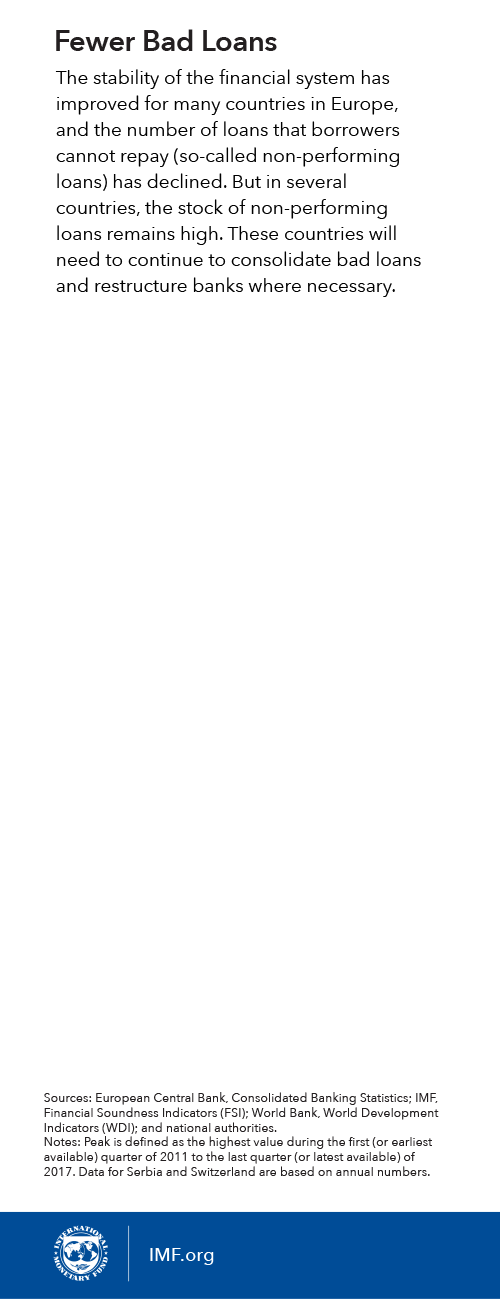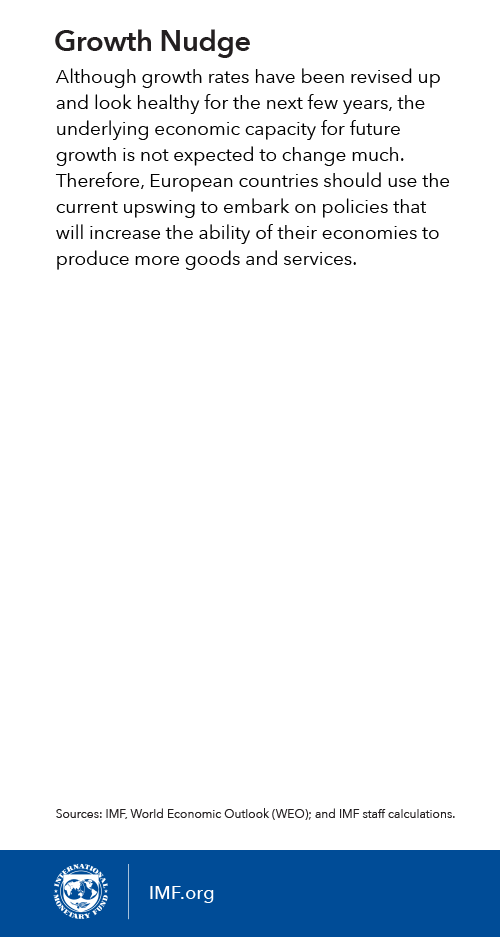
Bucharest, Romania. With annual growth at 7 percent, Romania was the fastest growing economy in Europe in 2017. All European economies are currently on an upswing. (Photo: mladensky/iStock)
Europe on an Upswing―in Six Charts
May 15, 2018
Related Links
All European economies grew in 2017, and the outlook remains favorable in the short run, says the IMF’s latest regional report. But for growth to last beyond the current upswing, European countries will need to loosen structural constraints on growth, which range from barriers to investment to dwindling competitiveness.
“Europe continues to enjoy strong growth but recent indicators suggest that momentum is leveling-off somewhat. Medium-term economic prospects are less bright, so policymakers should seize the moment to lower their deficits and debt and push forward with reforms to make their economies more productive,” said Poul Thomsen, Director of the IMF’s European Department.
Here are six charts that show recent economic developments and challenges to growth.
Real GDP in Europe increased by 2.8 percent in 2017, a full percentage point faster than the previous year. For the first time since the global financial crisis of 2008, all economies have posted gains.
Investment plays an increasingly important role in Europe’s recovery, yet there are challenges ahead. Countries should use the good times to address these with reforms.
There are marked differences in the movement of wages in the European Union; the dividing line lies between the original 15 member states and the countries that joined after 2004. Read more about European wage dynamics in a special IMF report.
In the euro area, the share of toxic loans (loans that have low chance of being repaid) has been substantially reduced since its peak in 2014. However, the remaining bad loan stock still weighs on the profitability of banks and the availability of credit in several countries.
Beyond the coming few years, growth is not going to speed up significantly in Europe. That is why the IMF recommends reforms to make the economy more productive, including by ambitious labor and product market reforms in advanced Europe and improving institutions in emerging Europe. For more recommendations, read the report.








